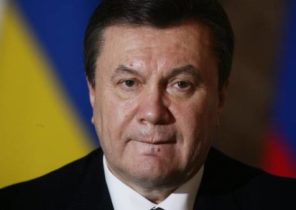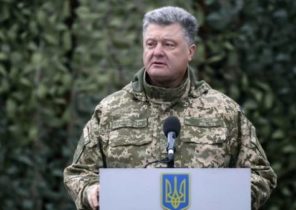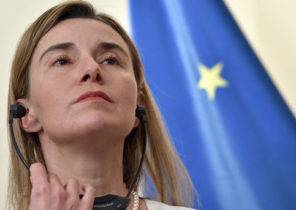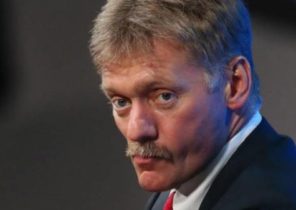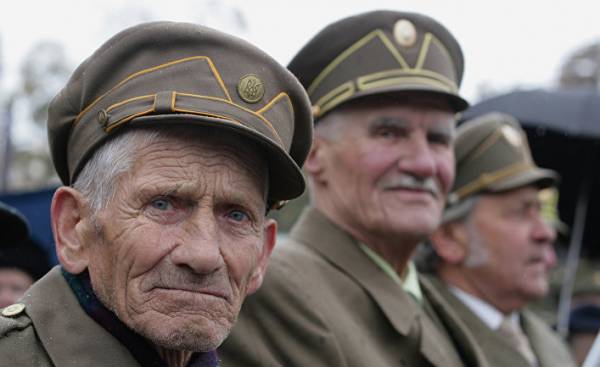
10 myths about UPA (banned in Russia as extremist organization — approx. ed.). As it was, really?— the joint project, which aims to refute the myths that exist in the collective memory of the activities of the Ukrainian insurgent army.
Myth 1: UPA — “Hitler’s henchmen” and against the Nazis fought
Quote is a myth: “there is No document which would testify about the combat actions of the UPA against the Germans. And in the 42nd, and 43rd, and 44th years, the Germans supplied weapons to the detachments of the UPA”. Dmytro Tabachnyk, Minister of education and science of Ukraine (2010-2014), the broadcast of “Big politics” on TV channel “inter”, 12 November 2012.
The gist of the myth
The UPA (Ukrainian insurgent army — the armed wing of the organization of Ukrainian nationalists (OUN)(banned in Russia as extremist organization, approx. ed.) — banned in Russia organization, approx. ed.) was created by German occupants, in close cooperation with them she was engaged in counter-insurgency operations against Soviet partisans, Ukrainian, Jewish and Polish population. There is no evidence about the anti-Nazi struggle of the UPA.
Quick facts
About the struggle between the UPA and the German invaders and their allies is well documented German, Soviet, Polish, and in fact the UPA-ovskogo of origin. The activities of the UPA and the German and Soviet sides were evaluated as anti-German uprising.
Facts read more
Extremely brutal occupation policies of the Nazis forced the leadership of the OUN(b) act on the protection of the population armed. The first hundred of the UPA was created on 22 January 1943. On 7 February she defeated the German commandant’s office in the district Volodymyrets ‘ in the region.
In spring 1943, the UPA has steadily increased the number and extent of resistance. The most violent clashes with the Germans occurred on Lucchini, Coolmine, Harkovshini, Rivne, Kremenetski, Costamolino, Carnosine and Nanovaccine. In March 1943 the rebels five times seized district centres. At the end of the first month of spring, German officials reported reichskomissar Erich Koch, that in the Volyn region, there are only two of the district free from “gangs”.
The occupation administration began to carry out a major counterinsurgency operation involving armored vehicles and aircraft. At the end of April in areas Berezno, Luvipol, Mizoch, Ostrog, Kremenets and Shumsk were transferred to the division to combat the UPA.
Punitive actions of the Nazis was ineffective. In March, the UPA units only 8 times attacked the German economic targets in April were 57 attacks, and in may 70.
At a meeting in Exactly 5 June 1943 with the participation of the Nazi Minister for the occupied Eastern lands of Alfred Rosenberg occupying the head of Volyn and Podillia Heinrich schöne reported that his administration “Ukrainian nationalists cause more difficulties than the Bolshevik gang.”
Interestingly, this fact was later recognized by the leadership of the Soviet partisans. The commander of the Soviet partisans Petro Vershigora March 4, 1944, reported in the Ukrainian headquarters of the partisan movement: “we must Not allow Poland the mistake that we made in the Volyn region, giving the leadership of a popular uprising against the Germans in the hands of counter-revolutionary groups of nationalists”.
Available troops to suppress resistance to the Nazis was not enough. Therefore, from July 1943, the struggle against the UPA engaged in anti-guerrilla commander of the forces in the East, Erich von dem Bach. Under his leadership, was 8th SS cavalry division Florian Ar (10 thousand men) and 10 battalions of infantry with artillery. From the air this group covered 27 aircraft and 50 tanks and armored vehicles.
However, the UPA units maneuvered and gave himself to destroy. Only in July the rebels 295 times attacked German strong points and 119 times economic projects.
Since the beginning of August 1943, von dem Bach was recalled to Galicia to fight the RAID of Kovpak. With the weakening of the German onslaught, the activity of anti-German speeches, the UPA has increased: 391 attack on the garrisons and 151 of the attack on the enterprise.
But soon the Supreme commander of SS and police of Ukraine Hans Prutzmann organized a new offensive against the UPA. This offensive continued on the southern Volhynia from 23 August to 9 September 1943. First, the air force bombed the village of Antonovka, which was the headquarters of the group “Bohun”. Consequently, a punitive expedition attacked the camp of the UPA in the Kremenets forests. The Smoking group had to split into small units and to break the encirclement.
In the summer of 1943 the insurgency against the Nazis spread to Galicia. August 18, the Ukrainian national self defence (UNS, the original name of the UPA in Galicia) attacked a German quarry in the city of Skole in the Lviv region. 150 workers forced the nationalists were released, and the protection of the camps destroyed.
In the fall of 1943 began a large-scale fighting between the rebels and the Nazis. On 3 September near the town of Valley with dominant heights of the Ukrainian soldiers shot a battalion of Germans, travelling on the narrow gauge railway in the mountains. On the battlefield, the Germans left about 200 soldiers. 25-29 September hundred trembita repelled the attack by the executioners at their camp on the mountain Stovba.
On 29-30 November 1943 was a tough fight between 1,5-2 thousand shutsmanov and Smoking Krivonos-II near the village Nedilna on Summershine. The rebels retreated with considerable loss, on the battlefield left almost the entire staff of the ataman himself Smoking.
In Volyn the last major naxal operation, Prutzmann held in November 1943. November 2-3 aircraft bombed the city Stepanov and drove out of the subdivision Glow to the North. At the same time November 3, German aircraft strafed and bombed the town of Kolka, where the UPA formed the “Kolkovska Republic”. It should be noted that the territory of the “Republic”, the Nazis could not capture from June to early November 1943, when had a sweep, killing up to 600 civilians.
In October — November 1943 between the UPA-ONS and the German occupiers occurred 47 fights, and rural self-defence, the UPA has spent 125 collisions. The Nazis lost more than 1.5 thousand soldiers.
Completely suppress the resistance of the UPA Nazis failed. The Soviet-German front was approaching, was pulling most of the military forces. Therefore, large-scale naxal stock in Volhynia the German generals never carried out. On Galician lands, and the standoff lasted until late summer 1944. Ukrainian national self defence (UNS) re-formed in the UPA-West. The UPA in March — may 1944, acted in defense of Ukrainian villages from German looting. Sometimes lack of progress: in may, the Wehrmacht smashed hundreds of name Halide and Siromani in the Lviv region.
From 31 may to 6 June 1944, in the Black forest with the UPA fought part of the 7th Panzer division. Until mid-summer confrontation in Galicia has reached a peak.
The biggest clash of the UPA-West, with the German-Hungarian troops have occurred around the mountain Shovel at the junction of Drohobych and Stanislav (now Ivano-Frankivsk) region. About these events in detail, also reported and written reports of the Polish underground. From 6 to 16 July 1944 there was intense fighting that from the shelling moved on to melee. But the victory was with the rebels under the command of Vasyl Andrusyak — “Rezun”. Poleg 50 Ukrainians, and the invaders lost about 200 soldiers and retreated.
Under the blows of the red army, the Wehrmacht left Ukraine. In early September occurred mainly minor skirmishes and disarmament upovtsami German units.
In the history of the Ukrainian insurgent movement was the episodes when individual commanders tried illegally to hold talks with the German command on the formula “neutrality in exchange for weapons or food in exchange for weapons”. It is also known about several cases when according to this formula from 80 to 100 firearms had has transferred to the rebels. But such arrangements were not welcomed by the command of the Ukrainian underground. In some cases, even came to harsh punishment. In March 1944, by sentence of court-martial Ian shot the first initiator of the unauthorized negotiations of the Antoniuk Porphyry — Sosenka. Also in April, 1944 at the sentence of the court executed the UPA Nicholas Oleynik — “eagle.”
Later, the negotiations with the German occupation officials was held. The invaders were interested in the fact that the OUN and UPA stopped the anti-German fight to keep the Germans were able to throw more forces to deter a Soviet attack. The OUN sought to secure the release of political prisoners from concentration camps (Stepan Bandera, Yaroslav Stetsko, and many others), and to obtain weapons for the UPA, which always lacked. Meetings between representatives of the OUN-UPA and the German authorities took place in March, April, June, and July 1944. Due to them, the rebels got a few hundred weapons, and in September — October 1944, the Nazis released Stepan Bandera and other Ukrainian nationalists, though left under the supervision of the Gestapo.
But Bandera reduced the intensity of anti-German stock (mostly in Volhynia), but did not stop them altogether. As reported, the officer of army group South, major Mueller, “at that time, as a single national Ukrainian gangs put themselves at the disposal of the German Wehrmacht or to do his job, others are a frantic struggle against the Wehrmacht with a fanatical hatred.” Examples of such “mad struggle” in the Black forest or on the mountain Shovel in Galicia mentioned above.
The activities of the UPA recognized the anti-German uprising and the German occupation, the leaders of the Shen, von dem Bach and Prutzmann, and Soviet guerrilla commander Vershigora. Researchers estimate loss at the hands of the UPA in 12 thousand German occupiers and their allies. In an armed confrontation with the occupiers, the Ukrainian underground and rebel units also lost 10-12 thousand.
To put the point in the history of this myth, we can only quote one of the many German documents the existence of which “did not know” the aforementioned former Minister of education Dmitry Tabachnik. This is a telegram to the Supreme leader of the SS and police Ukraine of SS-obergruppenführer Hans-Adolf Pryutsmanna dated 25 August 1943: “the Commander-in-chief of the territory of army group South. Due to the fact that reichsfuehrer SS gave strong detachments under my military units at the disposal of the front, I am forced to confine the remnants of these parts to suppress the Ukrainian national uprising in Volhynia. As in the North of Ukraine arise because of this large uncontrolled areas, in the near future we should expect increased pressure on gangs in the southern direction.”
